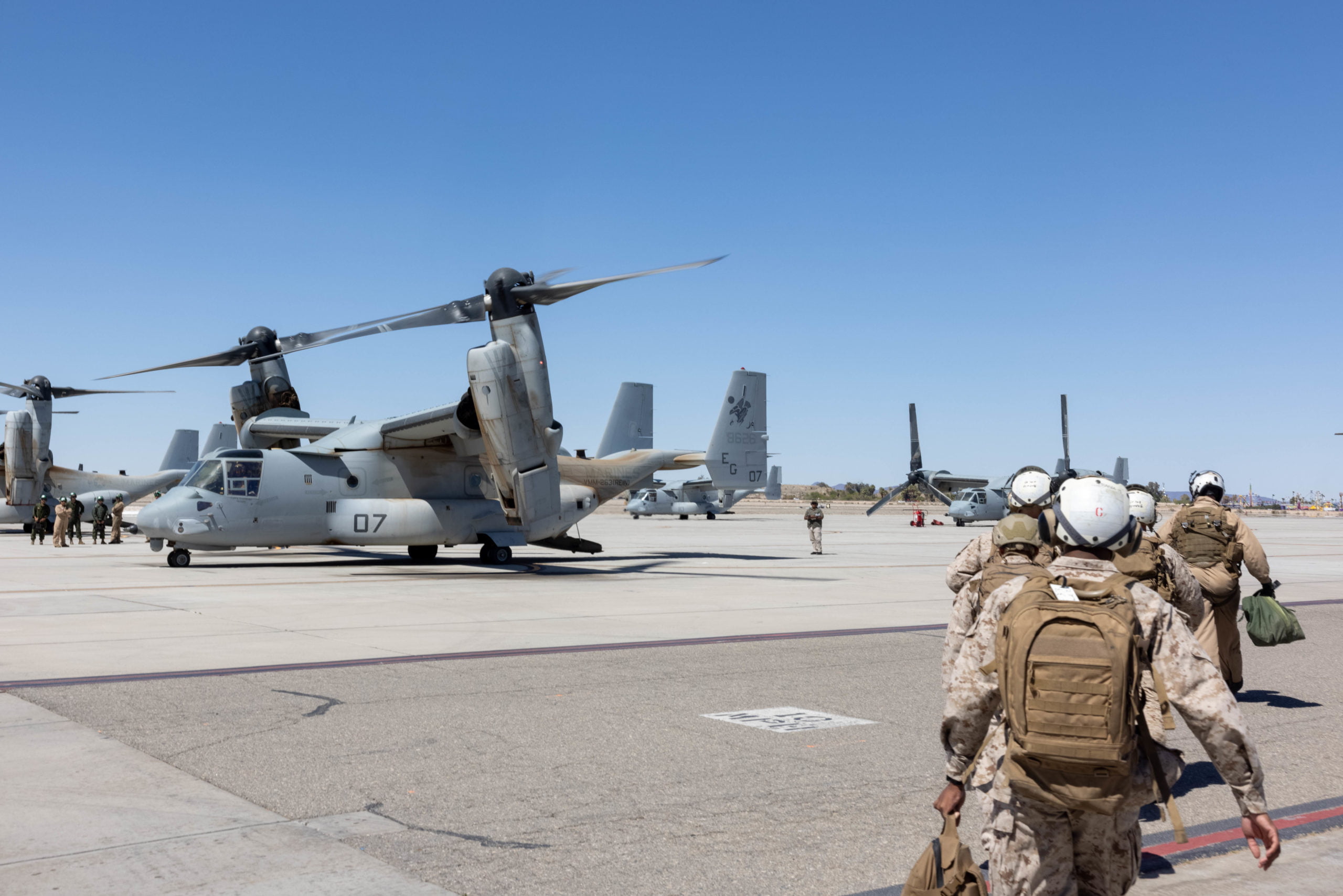By Robbin Laird
C3 is the key tissue allowing for the shaping of a distributed force which can be integrated to create the desired combat effect. During my November 2023 visit to MAWTS-1, I discussed the way ahead in this crucial area with Major Christopher Werner, the C3Department Head.
Werner is a DASC marine, as is the current XO of MAWTs.
These are Marines who focus on providing the direction for air operations supporting the ground forces, and hence are key players in shaping an integrated ground maneuver force.
Major Werner began by describing their key role, notably working with the USAF, in providing fire support for the ground forces in Afghanistan. He noted that they were able to operate within a MAGTF construct to provide significant support for the ground forces in counter-insurgency operations.
But with the shift to preparing for combat operations against peer competitors, the focus has shifted both for the air element and the focus of C3 Marines on force integration. The air element is now returning to air-to-air combat as well as air defense as key missions, both of which were not the focus of attention in the counter-insurgency wars.
And now the C3 effort for the USMC needs to shift from a primary focus on integration within the MAGTF to working with the joint force and using C3 to integrate relevant joint force elements to create the desired effect.
Werner noted that their cooperation with the USAF evident in Afghanistan was going forward, but there was a renewed emphasis on working with the Navy on new ways to do force integration, to which C3 needed to provide the integrating tissue.
But this was a work in progress.
Major Werner noted that officers of the same rank of his in the Navy are pushing for more effective C3 between the services, but major problems remain in terms of working with the C3 systems of the carrier task forces.
He underscored: “That is something we need to work out if we can operate as an inside force with the carrier strike groups.”
C3 for the joint force as seen with the Navy MISR officers is essentially sensor-shooter integration over a kill web.
As Major Werner put it: “What we teach in our courses is the importance of being able to take data from whatever joint or coalition forces sensors are relevant to us and blending them into data enabling shooters and fires control decision makers. I think that makes our community such an interesting one to work within today, notably as the joint services pursue ways to do joint command and control to create desired combat effects at the tactical edge.”
From my own point of view, an important focus which would enable the Marines is building on the ARG-MEU and its amphibious ships. Ed Timperlake and I in our book on the maritime kill web, we underscored how we envisaged a very dynamic future for such a force.
As we argued: “There is no area where better value could be leveraged than making dramatically better use of the amphibious fleet for extended battlespace operations. This requires a re-imaging of what that fleet can deliver to sea control and sea denial as well as Sea Lines of Communication (SLOC) offense and defense.
“Fortunately for the sea services, such a re-imaging and reinvention is clearly possible, and future acquisitions which drive new connectors, new support elements, and enhanced connectivity could drive significant change in the value and utility of the amphibious fleet as well. In addition, as the fleet is modernized new platform designs can be added to the force as well. And as we will address later in the book, this entails shaping variant payloads as well to be delivered from a distributed integrated amphibious fleet.
“As building out the evolving fleet, larger capital ships will be supplemented and completed with a variety of smaller hull forms, both manned and autonomous, but the logistics side of enabling the fleet will grow in importance and enhance the challenges for a sustainable distributed fleet. That is certainly why the larger capital ships – enabled by directed energy weapons as well – will see an enhanced role as mother ships to a larger lego-like cluster of smaller hull forms as well.”
And as maritime autonomous systems come on line, amphibious ships are well positioned for mother ship functionality in terms of launching and leveraging air and sea autonomous systems.
Note: The quote is taken from: Robbin F, Laird, and Edward Timperlake. A Maritime Kill Web Force in the Making: Deterrence and Warfighting in the 21st Century (pp. 109-110). Kindle Edition.
Featured Photo: U.S. Marines with Command, Control and Communication, Marine Aviation Weapons and Tactics Squadron One (MAWTS-1), board an MV-22B Osprey aircraft during an offensive air support exercise, part of Weapons and Tactics Instructor (WTI) 2-23, at Marine Corps Air Station Yuma, Arizona, April 4, 2023.
WTI is a seven-week training event hosted by MAWTS-1, providing standardized advanced tactical training and certification of unit instructor qualifications to support Marine aviation training and readiness, and assists in developing and employing aviation weapons and tactics. U.S. Marine Corps photo by Lance Cpl. Ruben Padilla.


